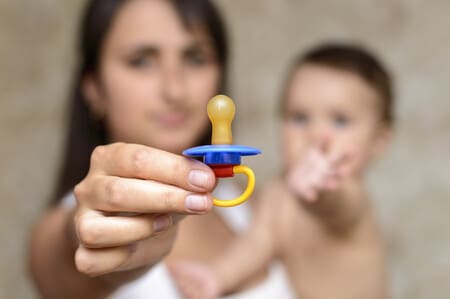The process of giving up a pacifier can be a significant milestone in a child's growth, but it can also present challenges for both young children and their parents. As experts in early childhood education, we understand the importance of approaching this change with sensitivity and patience. Here are three tips to help your children in the process of giving up the pacifier effectively and calmly.
1. Introduce Change Gradually:
Abrupt change can be overwhelming for children, especially when it comes to something as comforting as a pacifier. Instead of removing it suddenly, consider introducing the change gradually.
Set specific times for pacifier use, such as during naps or at night, and outside of those times, encourage your child to give up the pacifier. You can explain that the pacifier is only for certain times and that, as your child gets older, he or she won't need it as much. This approach gives the child time to adjust emotionally to the change.
2. Offers Comforting Alternatives:
Pacifiers often serve as a source of comfort for children, so it is crucial to offer alternatives that provide a similar sense of security and comfort. A favorite teddy bear, soft blanket or special toy can be comforting options.
Encourage your child to embrace these alternatives when he feels the need to reach for the pacifier. Whenever he turns to another object to soothe himself, praise him for making positive choices and let him know that he is brave to face this change.
3. Celebrate Small Achievements:
Giving up the pacifier is a gradual process, and it's important to celebrate each small accomplishment. Instead of focusing only on giving up the pacifier completely, celebrate the moments when your child manages to go for longer periods without it.
Establish a simple reward system, such as a sticker on a calendar each time he or she gives up the pacifier during the day. This reinforces positive behavior and motivates your child to successfully continue the process of giving up the pacifier.
Also, praise and acknowledge their efforts, even if they are small. Positivity and positive reinforcement help create a positive association with change, making the process less stressful for your child.
Bonus Tip: Involve Your Child in the Process:
An additional approach that may be beneficial is to involve your child in the process of giving up the pacifier. Ask him how he feels about it and explain the benefits of giving up the pacifier, such as growing up to be a big boy. Allow them to choose where to store their pacifiers when they are not using them, giving them a sense of control and involvement in the decision.
Also, if your child shows resistance, listen to their concerns and validate their emotions. Understanding their feelings can help you approach the process more effectively and compassionately.
In conclusion, the process of giving up the pacifier is an important transition that may require time and patience. By introducing the change gradually, offering comforting alternatives, celebrating small accomplishments and, above all, involving your child in the process, you will be building a solid foundation for a successful change. Remember that every child is unique, and it is essential to adapt these tips according to your child's needs and personality. With love, patience and understanding, this process can become a positive growth experience for both of you. At Logos Nursery School, a leading school in Las Rozas de Madrid, we are at your disposal for any questions you may have.

